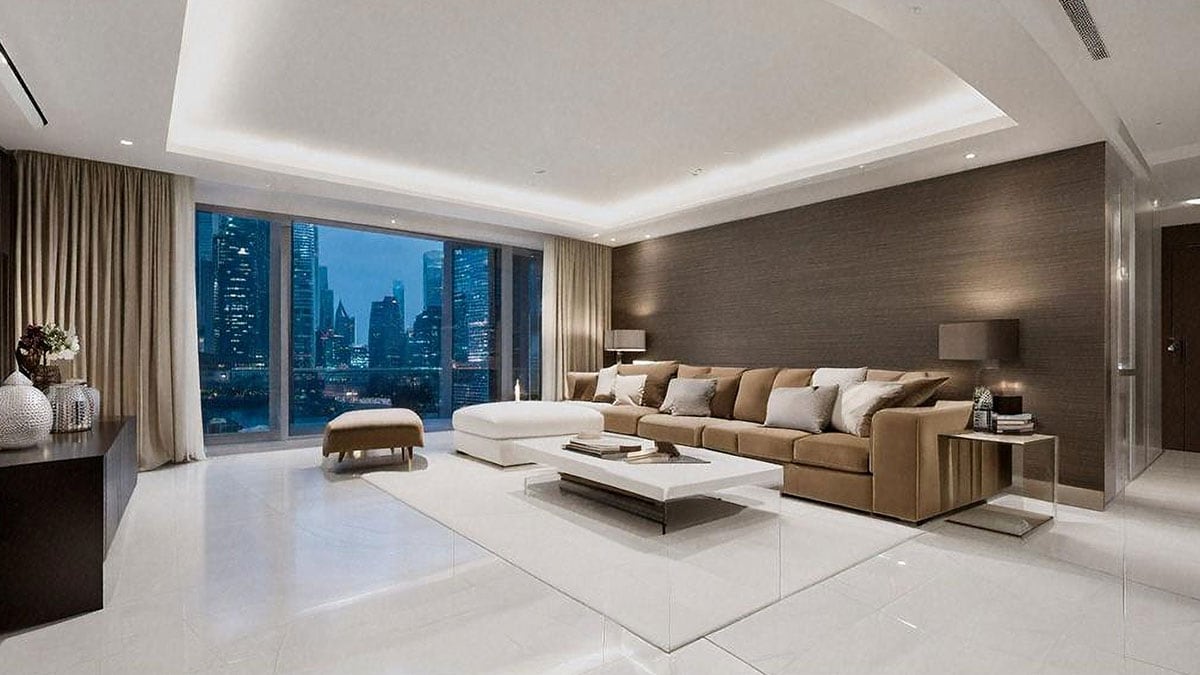Living in a tiny home is becoming increasingly popular due to the appeal of downsizing, minimizing clutter, and adopting a simpler lifestyle. However, living in a small space doesn’t mean sacrificing comfort or style. With the right approach, even the smallest of homes can be both functional and beautiful. Here are some clever design tips to help you make the most of your tiny living space.
1. Use Multi-Functional Furniture
One of the key principles in maximizing a tiny home is incorporating multi-functional furniture. Furniture pieces that serve more than one purpose are invaluable when you’re dealing with limited space. This can be done during the interior design process.
Here are some great ideas:
- Fold-out desks that can be tucked away when not in use.
- Sofa beds for when guests come over.
- Storage ottomans that can double as seating or footrests.
- Wall-mounted desks that save floor space.
2. Utilize Vertical Space
In a tiny home, floor space is limited, so it’s essential to make use of the vertical space. Installing shelves or cabinets up high can help keep your floors clear and your items organized. Here are some ideas for maximizing vertical space:
- Hanging plants or shelving units.
- Vertical storage racks in the kitchen or bathroom.
- Lofted sleeping areas that create additional living space underneath.
3. Keep the Color Palette Light and Neutral
Light, neutral colors can make a small space feel bigger and brighter. Opt for whites, soft grays, or light blues for your walls and furniture. These colors reflect light, making the room feel airy and open. You can add small pops of color with accessories like throw pillows, rugs, and artwork to add personality to the space.
4. Embrace Minimalism
The more stuff you have in your tiny home, the more cramped it will feel. Embrace minimalism by decluttering and only keeping the essentials. Choose quality items that are both practical and aesthetically pleasing. In a small home, less really is more!

5. Maximize Natural Light
Natural light is crucial in small spaces. It can make a tiny room feel much more open and spacious. Try to keep your windows unobstructed and use sheer curtains or blinds to allow sunlight to flow in. If your home lacks windows, consider using mirrors to reflect light and create the illusion of a larger space.
“Living in a tiny home doesn’t have to feel cramped. With a little creativity and thoughtful design, small spaces can be transformed into beautiful, functional living environments.”
6. Create Hidden Storage Solutions
Storage is essential in a tiny home, but it doesn’t have to take up valuable space. Hidden storage solutions keep your home organized without making it feel cluttered. Look for furniture with built-in storage, such as beds with drawers underneath or coffee tables with hidden compartments. This can be done through carefully planned home remodeling.
You can also use wall-mounted hooks and magnetic strips to store everyday items efficiently.
7. Use Mirrors to Create the Illusion of Space
Mirrors can make a small space feel much larger. Placing mirrors opposite windows helps reflect natural light, brightening up the room.
You can also use mirrored furniture or decorative wall panels to enhance the sense of openness. Large mirrors on closet doors or along hallways can create depth and make a tiny home feel more spacious.
8. Choose Space-Saving Appliances
Traditional appliances can take up too much room in a tiny home. Instead, opt for compact, space-saving options. Consider a mini-fridge, a combination washer-dryer, or a foldable stovetop.
Wall-mounted kitchen racks can hold small appliances, freeing up counter space. Smart home devices can also help you control appliances efficiently without needing extra space for switches and dials.
9. Define Spaces with Rugs and Curtains
Tiny homes often have open layouts, making it important to define separate living areas. Rugs and curtains can create visual boundaries without using bulky dividers.
A large rug can anchor a living space, while a curtain can separate a bedroom or work area. Folding screens or bookshelves can also help create sections within a small home without making it feel cramped.
10. Opt for Foldable and Stackable Items
Flexibility is key when living in a tiny space. Foldable and stackable items help keep things functional without sacrificing space. Consider fold-down dining tables, stackable chairs, and collapsible laundry baskets.
When not in use, these items can be stored away, giving you more room to move around.
Conclusion
Maximizing small spaces requires smart design choices and a minimalist mindset. By using multi-functional furniture, utilizing vertical space, keeping colors light and neutral, embracing minimalism, and maximizing natural light, you can create a tiny home that feels open, spacious, and incredibly stylish.
Whether you’re downsizing or looking to optimize your existing space, these tips will help you make the most of every square inch.

